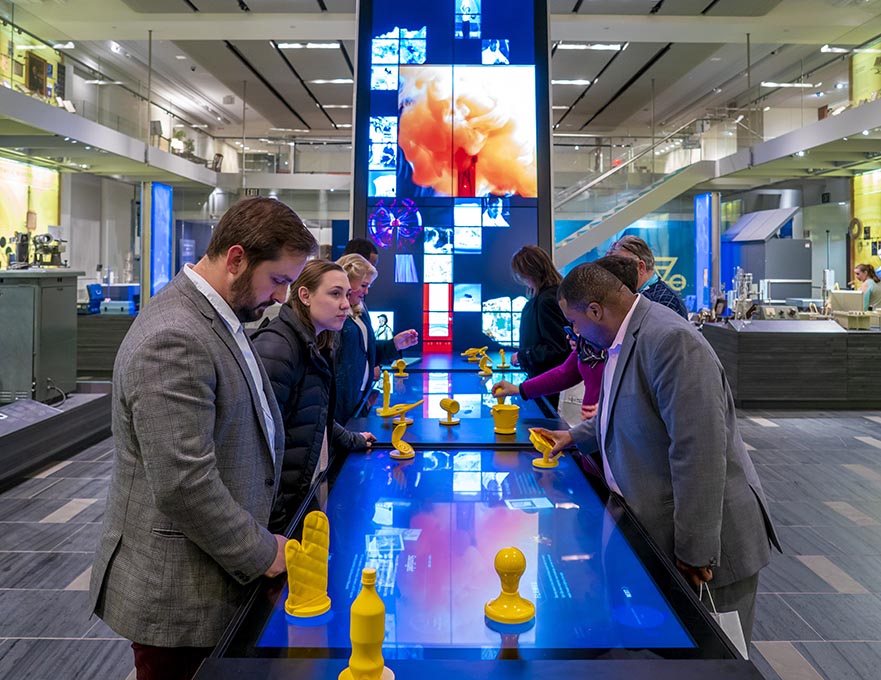CHALLENGE
The Science History Institute has moved from its initial focus on the history of chemistry to a broader program encompassing life sciences and biotechnology. The Institute also aims to attract a wider audience while retaining its role as a world-class center for scholars, historians, and researchers. However, much of the display material was based on outdated technology with limited appeal to a younger tech-savvy audience. A more engaging environment was essential.
The Institute team wanted to create a more interactive experience — based on scientific principles, but approachable, relevant and enticing to all visitors. The aim, to present the history and relevance of science in fun, and engaging way by fusing technology with storytelling. It should give visitors a new perspective on scientific achievement. Excite them with intriguing facts and encourage them to take a deeper dive on a journey of discovery into the ‘weird and wonderful history of science.









